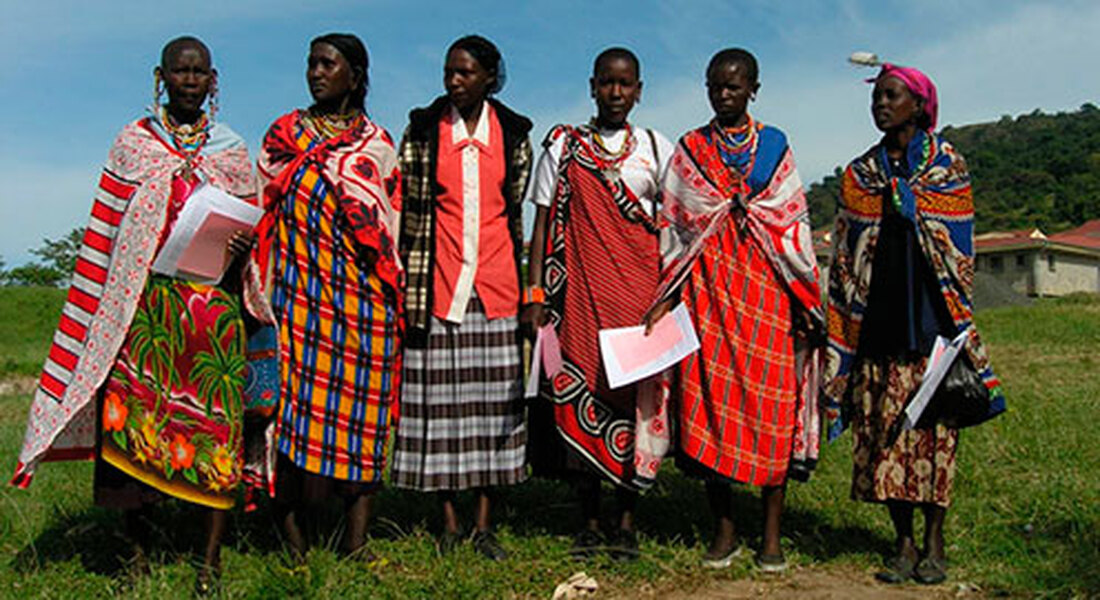The Kenya Diabetes Study
Type 2 diabetes is a rapidly growing problem in developing countries. This increase is due to changes in the life-style (e.g. diet and physical activity) in combination with genetic predisposition. Urbanisation is particularly important, apparently (because this conclusion is based on increases in prevalence) leading to a 2-4 times increase in the incidence of diabetes in developing countries all over the world.

We conducted a study to assess the prevalence, distribution and determinants of type 2 diabetes in Kenya in 2005-06 (data collection part). The study was conducted in three rural areas among the ethnic/life-style groups Luo (fishing-agricultural group), Kamba (agricultural group), and Maasai (agro-pastoralist group), and in an ethnically mixed group in the capital city of Kenya, Nairobi. Among the ~1,500 adult study participants, data on dietary intake, physical activity, body composition, liver fat, blood pressure, haemoglobin and resting pulse as well as socio-economic status were collected.
Type 2 diabetes is a rapidly growing problem in developing countries. This increase is due to changes in the life-style (e.g. diet and physical activity) in combination with genetic predisposition. Urbanisation is particularly important, apparently (because this conclusion is based on increases in prevalence) leading to a 2-4 times increase in the incidence of diabetes in developing countries all over the world. However, the risk factors of type 2 diabetes in developing countries seem to be different from those seen in the industrialised countries. In order to develop appropriate preventive interventions there is a need to identify risk factors for type 2 diabetes in developing countries.
We conducted a study to assess the prevalence, distribution and determinants of type 2 diabetes in Kenya in 2005-06 (data collection part). The study was conducted in three rural areas among the ethnic/life-style groups Luo (fishing-agricultural group), Kamba (agricultural group), and Maasai (agro-pastoralist group), and in an ethnically mixed group in the capital city of Kenya, Nairobi. Among the ~1,500 adult study participants, data on dietary intake, physical activity, body composition, liver fat, blood pressure, haemoglobin and resting pulse as well as socio-economic status were collected. Fasting blood samples were collected followed by a standard 75-g oral glucose tolerance test (OGTT) in order to determine the prevalence of diabetes, insulin secretion status, and lipid profile. The prevalence of diabetes and pre-diabetes was assessed, and determinants identified. A sub-group of the study population did also have a glycated haemoglobin (HbA1c) test which has since been analysed for comparison of the old gold standard tool for diabetes diagnosis with the more recent gold standard (HbA1c).
Gold standard equipment for conducting a field study under constrained conditions was used including ultrasound scanning for abdominal fat tissue distribution, combined movement sensor and heart rate monitor for assessment of physical activity energy expenditure, OGTT and HbA1c for diagnosis of diabetes and repeated 24-h recall interviews for the assessment of dietary intake.
The study has provided important new information that could lead to novel strategies to combat the emerging global diabetes epidemic. Recently (February 10th 2017) the main results from the study were presented at the KEMRI Annual Scientific & Health (KASH) Conference in Nairobi which will result in a policy brief to be used and implemented by the health authorities in Kenya.
Country of study
Kenya
The study is based on collaboration between Kenyan, Danish and other European institutions.
In Kenya:
- Centre for Public Health Research, Kenya Medical Research Institute (KEMRI), Nairobi
- Department of Recreation Management and Exercise Science, Kenyatta University, Nairobi
In Denmark:
- Department of Public Health, University of Copenhagen
- Steno Diabetes Center, Gentofte
- Department of Human Nutrition, University of Copenhagen
- Department of Nutrition, Technical University of Denmark
In Europe:
The data collection of the study was carried out in 2005-2006. As of 2018, papers are still being published from the study; similarly, PhD, Master and Bachelor studies are still being conducted based on the data from the study.
The study was mainly funded by DANIDA, Cluster of International Health at University of Copenhagen, and Steno Diabetes Center.
Association Between Plasma Proprotein Convertase Subtilisin/Kexin Type 9 and the Presence of Metabolic Syndrome in a Predominantly Rural-Based Sub-Saharan African Population, by Paquette et. al.
Ethnic differences in anthropometric measures and abdominal fat distribution: a cross-sectional pooled study in Inuit, Africans and Europeans, by Pernille F Rønn et. al.
Hemoglobin levels and blood pressure are associated in rural black Africans, by Jon B. Rasmussen et. al.
Cardiovascular risk factors in rural Kenyans are associated with differential age gradients, but not modified by sex or ethnicity, by Dirk Lund Christensen et. al. and supplementary material.
Geographic differences in the associations between impaired glucose regulation and cardiovascular risk factors among young adults, by J. Oya et. al.
Insulin resistance and beta-cell function in different ethnic groups in Kenya: the role of abdominal fat distribution, by Dirk Lund Christensen et. al.
HbA1c, fasting and 2 h plasma glucose in current,ex- and never-smokers: a meta-analysis, By Soraya Soulimane et. al.
Cardiorespiratory Fitness and Physical Activity in Luo, Kamba and Maasai of Rural Kenya, by Dirk Lund Christensen et. al.
Abdominal obesity has the highest impact on metabolic profile in an overweight African population, by Line Neerup Handlos et. al.
Dietary patterns, food and macronutrient intakes among adults in three ethnic groups in rural Kenya, by Andreas Wolff Hansen et. al.
Moving to an A1C-Based Diagnosis of Diabetes Has a Different Impact on Prevalence in Different Ethnic Groups, by Dirk Lund Christensen et. al. and supplementary material and HbA1c-based diagnosis of diabetes mellitus: ethnic disparities in prevalence effects by Carol Wilson
Prevalence of glucose intolerance and associated risk factors in rural and urban populations of different ethnic groups in Kenya, by Dirk Lund Christensen et. al.
Obesity and regional fat distribution in Kenyan populations: Impact of ethnicity and urbanization, by Dirk Lund Christensen et. al.
Associate Professor Dirk Lund Christensen, Global Health Section, Department of Public Health, Faculty of Health and Medical Sciences, University of Copenhagen.
